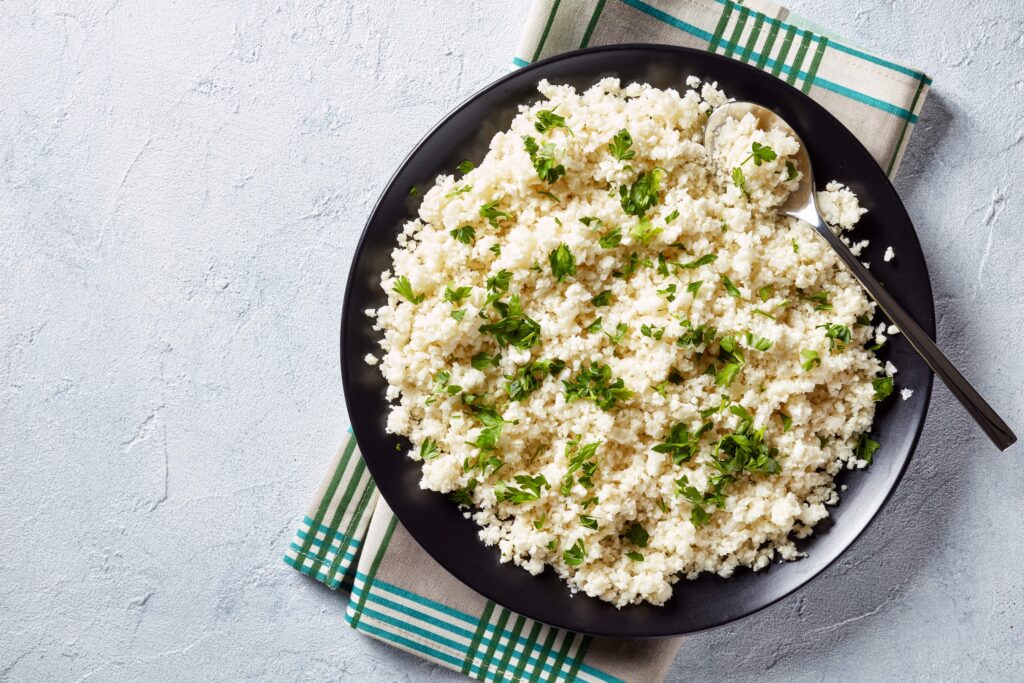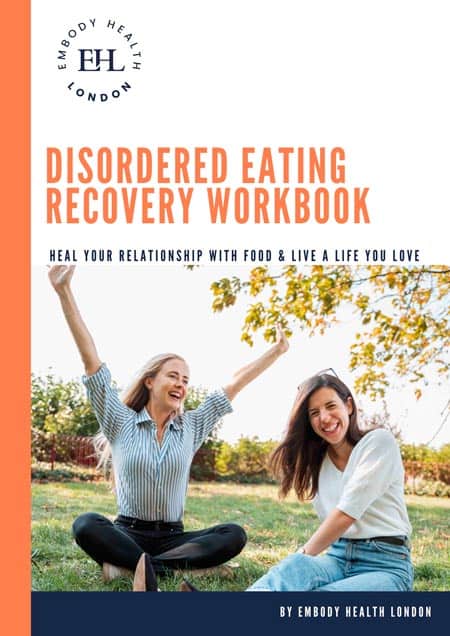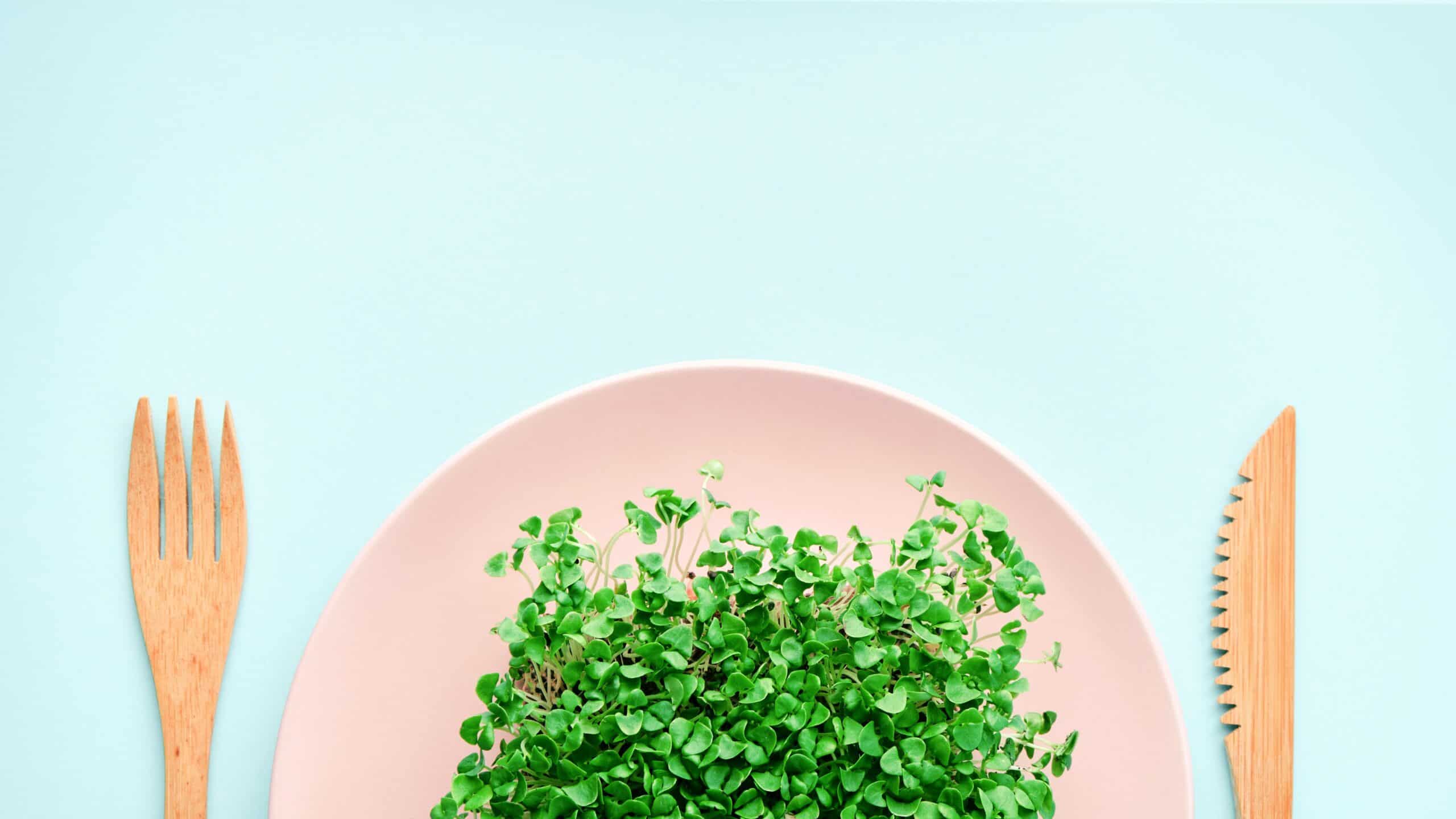Disordered eating in disguise? 6 wellness ‘trends’ that are holding you back from food freedom
If you’re reading this, you likely are aware of diet culture and how it creates unrealistic expectations around what to eat and how to look and present ourselves to the world. You may even feel ready to ditch diet culture for good. However, what adds a further piece to the already bewildering puzzle is how it disguises itself, sneaking up on us often without fully realising it.
Health fads and triggering rituals are often put in the spotlight, portrayed in the media as positive and simplified ‘solutions’ to an array of health concerns and body insecurities.
But, of course, we all know a person who may try out every latest trend at the time, apparently ‘swearing by it,’ but how long does it take for them to quickly jump onto something else, once again buying into the next ‘quick fix?’
In this article, we will dive deeper into six examples of what these trends may look like and why they may not be as incredible as they initially seem. We hope it will equip you with the skills to spot diet culture and tell the facts from the fads.
ONE: Choosing low-fat products over regular ones
The trend of low-fat, fat-free, reduced-fat, light and similar foods has been around for a while, with products continuing to take up space in supermarket aisles, keen for our attention (and wallets). Low-fat diets may interest people seeking to manage cholesterol levels, optimise heart health, or even simply watch their weight.
It’s important to remember that whilst these alternatives may be significantly lower in fat than their regular counterpart, they may be adapted to contain additional ingredients, such as free sugars, salts, flours and thickeners, to retain a good taste and flavour. This may increase calorific amounts to the point where they may even be higher than the original product.
Vitamins A, D, E and K are also known as fat-soluble vitamins because they are absorbed, transported and stored within fat cells in the body. Therefore, following a very low-fat diet over time may impact the absorption of these critical nutrients and the all-important omega-3 fatty acids. (1)
Fats can and should still be enjoyed in every meal, as they contribute to satisfaction and fullness in our food, as well as support the absorption of important nutrients that serve to protect our immune system and bone health. However, as supermarket products often vary between brands, we also recommend you read food labels to better understand the nutritional profiles of what you’re buying.
Rather than exclusively opting for low-fat options, it may be more beneficial to be mindful of your consumption of saturated fats such as those found in animal products such as butter, lard, and red meats. Conversely, consuming a range of mono and polyunsaturated fats found in foods like olive oil, avocados, nuts, seeds, and dairy, can provide an excellent nutrition profile – so enjoy your regular yoghurt, cheese, or salad dressing!
TWO: Replacing rice and other carbs with cauliflower
Cauliflowers are pretty interesting in that they are highly versatile and have been a growing trend in the wellness world. In recent years, we have experienced the transformation of this seemingly bland cruciferous vegetable into steaks, nuggets, mash, couscous, pizza bases, flour, and so much more.
Cauliflowers have also been praised as a low-calorie alternative to carbs such as rice, providing around 25 calories per 100g compared to roughly 140 calories per 100g of cooked white rice, so it’s no wonder that people have been jumping on this latest trend. (2)
However, cauliflower is a vegetable high in fibre and other non-digestible carbohydrates, such as raffinose. Be mindful that eating high amounts of this vegetable may cause gas and bloating in some individuals, particularly in people who may not routinely consume a lot of cauliflower or fibre in their general diet (which is still a significant percentage of us in the UK!) (3)
We must also remember that rice is a complex carbohydrate and a staple ingredient all over the world. You do not need to feel guilty for eating it or feel the need to replace it with low-carb, low-calorie alternatives such as cauliflower. Vegetables eaten alongside the carbohydrate component of your meals will provide plenty of essential nutrients, allowing your meal to be more satisfying, woo!
Please take this as a daily reminder that you do not have to substitute rice for cauliflower (or ANY other low or no-carb alternative).
Carbohydrates are a fundamental energy source, rich in B vitamins, folic acid, and iron. Therefore, they can and should be enjoyed and appreciated as a part of a wholesome and balanced diet!
Finally – if made fresh, cauliflower rice only lasts approximately two days in the refrigerator – something to be mindful of if you are conscious of your food waste. (2)
THREE: Eating Halo Top over real ice cream
In recent years, Halo Top has hit the hot spot recently, marketing itself as a reduced-calorie, reduced fat ice cream brand. Its key selling point is that an entire tub may contain similar calories that you may get from a scoop or two of traditional ice cream brands.
Halo Top uses ingredients like stevia and prebiotic fibres to replace traditional ice cream bases and whip more air into their products, giving them a more mousse-like texture. As a result, a pint of their ice cream weighs in at almost 200g less than a Ben & Jerry’s equivalent. (4)
The brand name also appears to hold religious connotations, designed to come across as ‘holy’ or ‘angelic,’ which we see so often in diet culture. This isn’t the first time a brand has done this in the diet world – with many diet books titled with the word ‘bible,’ or Slimming World categorising foods as ‘syns.’ (5)
Although the recommended serving size is 1/2 a tub, their packaging phrases include things such as ‘stop when you hit the bottom’ and ‘no bowl, no regrets.’ This has been shown to encourage consumers to buy more – significantly more than they would buy regular ice cream – eat more, and probably feel more unsatisfied and guilty in the long term.
Ice cream deserves to be enjoyed as a guilt-free, fun food – in moderation or abundance – if you feel like it. We don’t need to ‘earn’ our food or miserably limit ourselves to seemingly healthier alternatives.
If Halo Top thought displaying their attractively low calorie numbers in colossal font sizes on their packaging was supposed to encourage us to indulge in their products feeling 100% guilt-free – well, think again.
If you do enjoy it of course, by all means, ENJOY! But check-in with why you’re opting for Halo top vs your favourite “regular” ice cream or gelato.
FOUR: Eliminating gluten and lactose with no intolerance diagnoses
Another growing trend in the wellness world has been to cut out or restrict foods and ingredients that a minority of the population may be intolerant to.
Whilst it is great to know that these people have discovered new intolerances in recent years and have cut out foods to improve their quality of life significantly, it is vital to remember the keyword here is ‘minority!’
It’s not recommended to cut foods out entirely and suddenly with no apparent objective. It can shock your digestive system and may do more harm than good nutritionally if you are not replacing the nutrients from these foods with sufficient alternative sources.
We’ve all heard the anecdote of a friend or relative claiming that cutting out dairy ‘healed their acne’ or that cutting out gluten ‘boosted their energy.’ Whilst this may be true to an extent, and we don’t live in their bodies, it doesn’t mean that you as an individual will experience the same as them.
This kind of information is known as ‘anecdotal evidence’ as it relies on one’s personal observations (usually of themselves) with no data and no solid evidence gathered. It is the weakest form of ‘evidence’ in science and shouldn’t be put on par with formal studies such as randomised controlled trials (RCTs) or meta-analyses.
Research is your friend – always take the time to read up on the latest evidence-based findings before believing anything that sounds too good to be true.
Lastly, if you feel significantly uncomfortable after eating a particular food and have noticed a pattern, it may be best to speak to a GP or dietitian. They can help you navigate tolerance testing to see if something is underlying and also to monitor and manage any symptoms you may be experiencing.
FIVE: Walking 10,000 steps per day
A dive into the history of the ‘10,000 steps’ myth found that it may have come from a marketing slogan in Japan several years ago. The conclusion of 10,000 steps probably was suggested since it is a nice looking, well-rounded figure – convenient for our brains (and fitness trackers) to remember.
An 8-week study on participants walking 12,000 steps per day found no improvements in body composition or metabolic syndrome when walking this distance. This step count alone was not significant to better the outcomes. However, when a moderate-intensity walking program was combined with the 12,000 steps, it improved participants’ visceral fat area and hip circumference measurements. (6)
This shows that perhaps it is about more than just numbers, and walking intensity plays a more prominent role than the distance covered.
Another study shows benefits at a much step number. The cohort of over 16,000 women found that those who walked just 4,400 steps a day on average had significantly lower mortality rates after a 4.3 year follow up than the least active, who walked 2,700. (7)
Moving 10,000 steps a day is not an accurate indicator of health or wellbeing and doesn’t consider the reality that every day is different. It also isn’t inclusive of those living with health conditions, physical impairments, or people who choose to move in other ways, such as cycling, swimming or rowing – all fantastic forms of exercise.
Is it beneficial to walk 10,000 steps a day? Probably yes, if you can comfortably do so, and provided, you enjoy walking. But the reality is not a one-size-fits-all answer, and our ideal step number probably varies from person to person. It could depend on their age, gender, social determinants of health, fitness level, daily routine and activities, and so much more.
SIX: Intermittent fasting
Intermittent fasting (IF) has stirred some debate over the years, but is it all it is hyped up to be? IF can be done in numerous ways – the 16:8 diet is defined as only eating in an 8-hour window each day. If undergoing the 5:2 diet, you may restrict your calorie intake to around 25% of your routine, two days a week. You may even opt for the alternate-day diet – fasting or consuming a limited amount of food every other day. (8)
IF in the research has been shown to lead to weight loss, but this is likely from the reduction in total calories consumed – not the fasting state itself. IF was not shown to be significantly superior to other weight-loss diets and programs. (9) And weight loss or not, there are many reasons why body weight is not a determinant of health.
It’s important to note that although these fasts may not limit what foods you eat, they are still not a normative way of eating. Fasting can lead to increased irritability or discomfort from hunger, a reduction in energy levels and even increased episodes of bingeing and overeating after a fast.
IF may cause more significant peaks and troughs in blood sugar levels, too – not ideal for regulating your glucose levels, hormones, and appetite. So if you are considering IF, or have in the past – ask yourself this: is it coming from a place of love or restriction?
Take this time to remind yourself that eating is a human necessity – we are not required to ‘earn’ food – no matter what the media says. You are entitled to eat whenever, wherever, and however you feel. So give yourself unconditional permission to eat – and we hope some of the above points resonated and offered clarity for you.
Wherever you are on your healing journey, know that you are doing amazingly, and we know you have so much more wonderful energy to offer!
Priya Chotai, BSc ANutr
EHL Team x
References:
- National Research Council (US) Committee on Diet and Health. (1989) Diet and Health: Implications for Reducing Chronic Disease Risk. Washington (DC): National Academies Press (US); 11, Fat-Soluble Vitamins. Available from: https://www.ncbi.nlm.nih.gov/books/NBK218749/
- Orr, G.,(2015). Cauliflower Rice: The New Superfood or Just The Latest Food Fad?. The Independent, [online] Available at: <https://www.independent.co.uk/life-style/food-and-drink/features/cauliflower-rice-new-superfood-or-just-latest-food-fad-10420036.html?amp> [Accessed 21 October 2021].
- Public Health England (2019) National Diet and Nutrition Survey [online] Available at: https://assets.publishing.service.gov.uk/government/uploads/system/uploads/attachment_data/file/943114/NDNS_UK_Y9-11_report.pdf
- Schwedel, H., (2017). The Devilish Magic of Halo Top. Slate, [online] Available at: https://slate.com/business/2017/08/halo-tops-appeal-is-a-delicious-lie.html [Accessed 22 October 2021].
- Turner, P., (2019). The No Need To Diet Book: Become a Diet Rebel and Make Friends with Food. London: Anima.
- Chiang TL, Chen C, Hsu CH, Lin YC, Wu HJ. (2019). Is the goal of 12,000 steps per day sufficient for improving body composition and metabolic syndrome? The necessity of combining exercise intensity: a randomised controlled trial. BMC Public Health. Sep 3;19(1):1215. doi: 10.1186/s12889-019-7554-y. PMID: 31481039; PMCID: PMC6724241.
- Lee IM, Shiroma EJ, Kamada M, Bassett DR, Matthews CE, Buring JE. (2019). Association of Step Volume and Intensity With All-Cause Mortality in Older Women. JAMA Intern Med. Aug 1;179(8):1105-1112. doi: 10.1001/jamainternmed.2019.0899. PMID: 31141585; PMCID: PMC6547157.
- Tinsley, G. and La Bounty, P. (2015). Effects of intermittent fasting on body composition and clinical health markers in humans. Nutrition Reviews, 73(10), pp.661-674.
- Davis, C., Clarke, R., Coulter, S., Rounsefell, K., Walker, R., Rauch, C., Huggins, C. and Ryan, L. (2015). Intermittent energy restriction and weight loss: a systematic review. European Journal of Clinical Nutrition, 70(3), pp.292-299.














